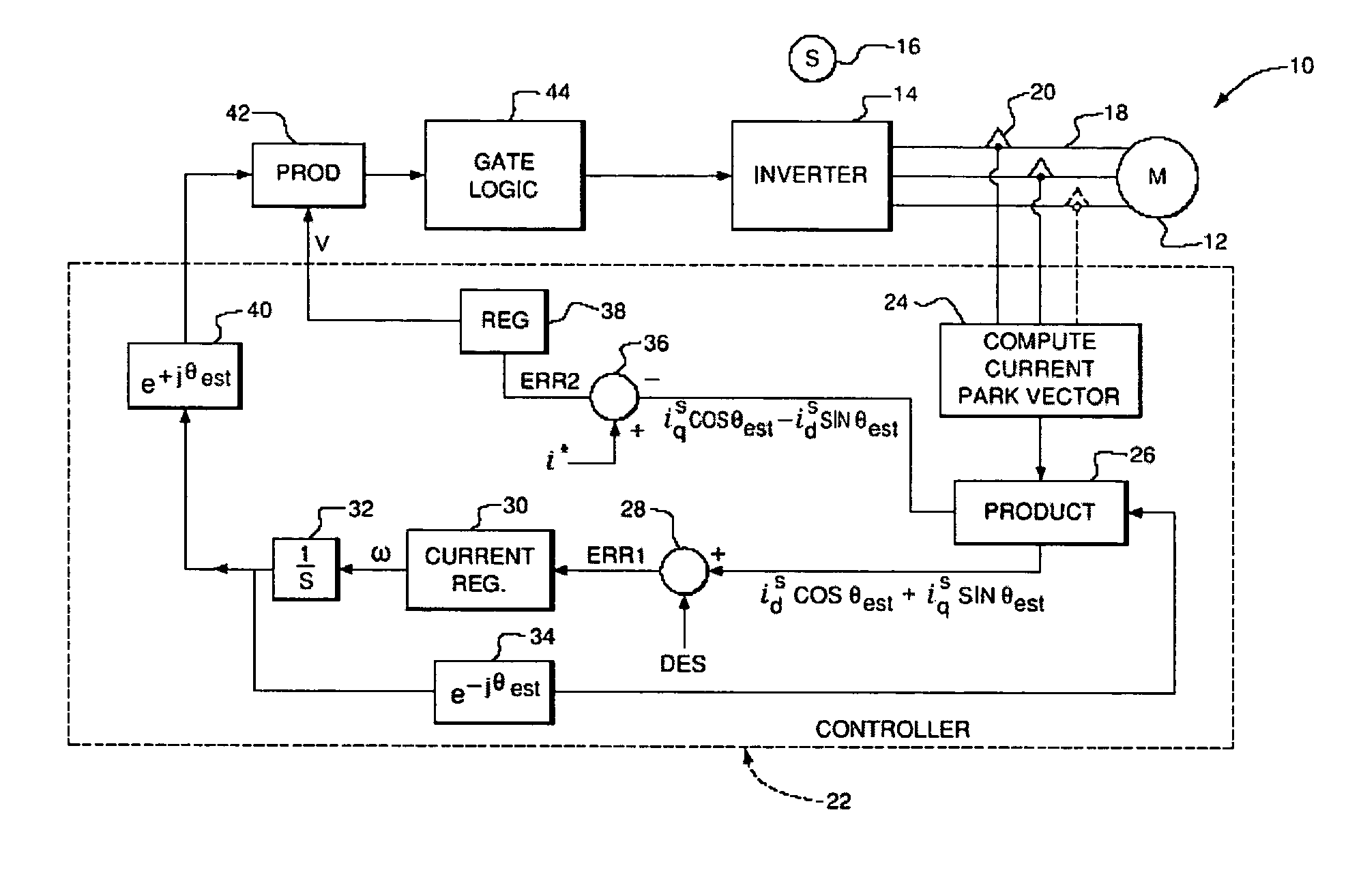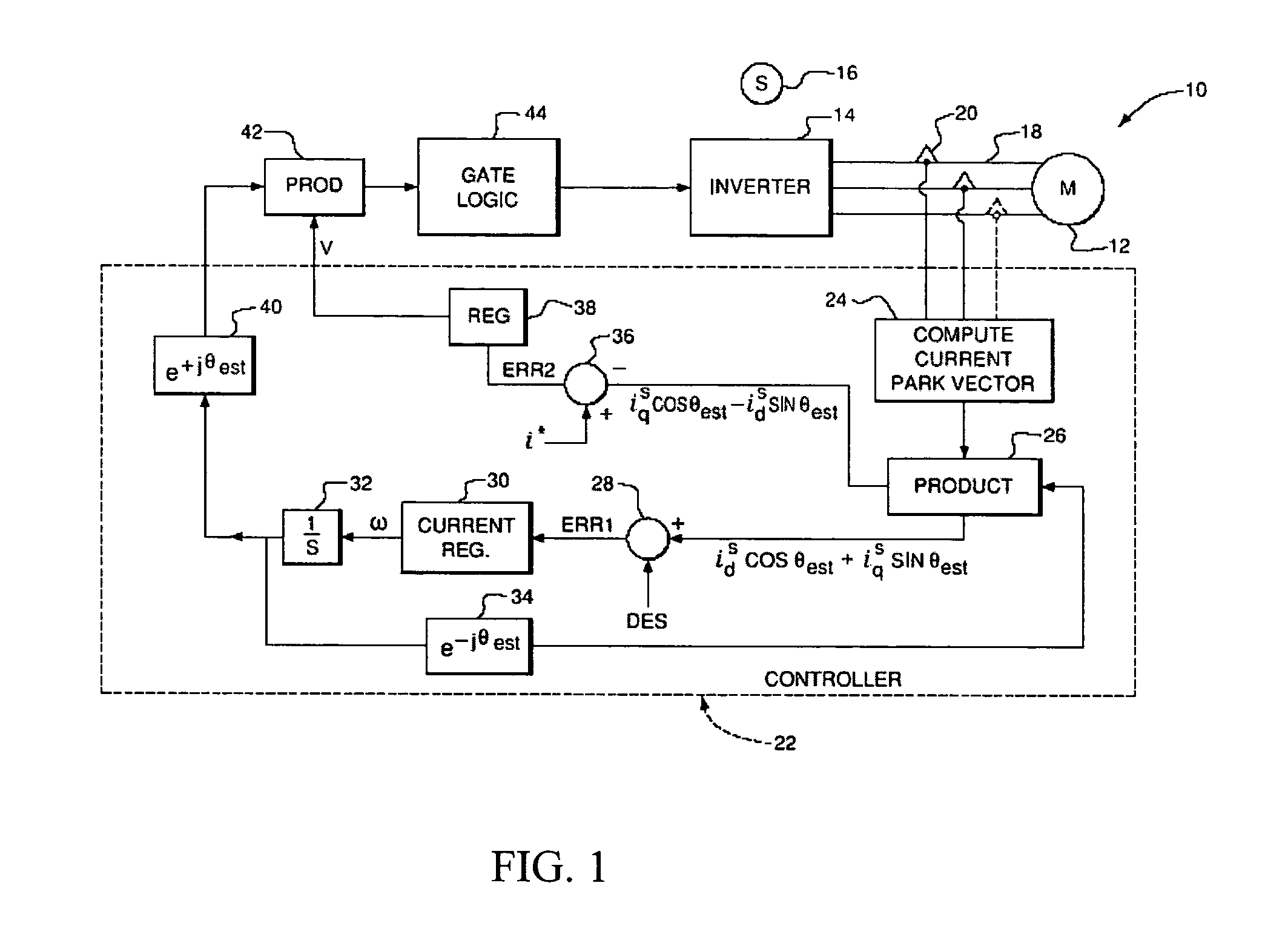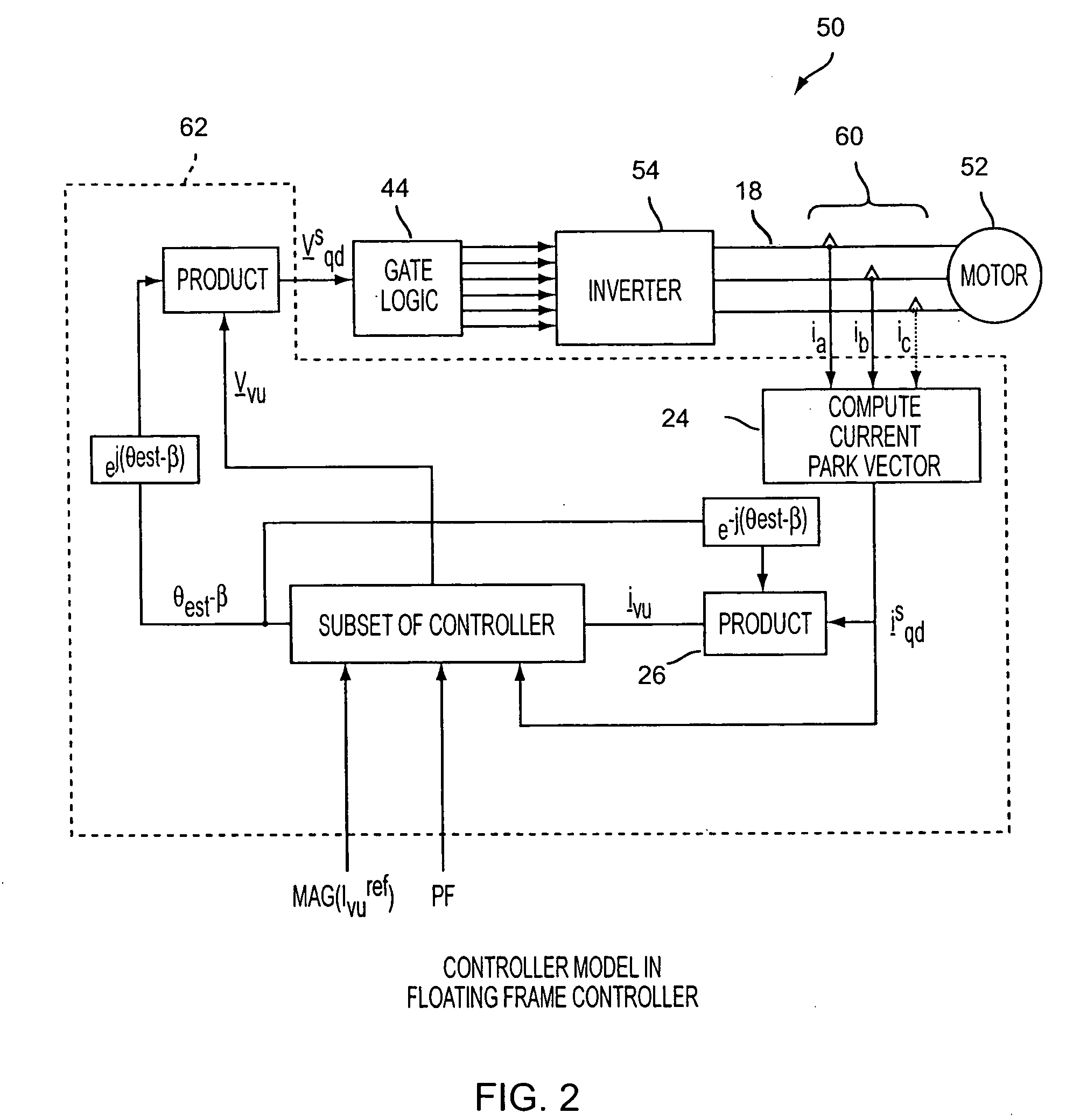Power factor control for floating frame controller for sensorless control of synchronous machines
a technology of power factor control and synchronous machine, which is applied in the direction of dynamo-electric converter control, motor/generator/converter stopper, instrument, etc., can solve the problems of delay, rotor position sensor is difficult to mount to the motor, and the rotor position sensor is difficult to be reliabl
- Summary
- Abstract
- Description
- Claims
- Application Information
AI Technical Summary
Benefits of technology
Problems solved by technology
Method used
Image
Examples
Embodiment Construction
[0023] In the exemplary embodiments of the present invention described below, a power factor controller is provided for a sensorless control technique for synchronous machines by using a floating frame controller. There are various definitions of power factor depending upon the characteristics of the electrical circuit. In sinusoidal electrical systems, power factor can be defined as the angle between the terminal voltage and phase current phasors or vectors. In nonlinear systems where the applied voltage is sinusoidal, power factor can be defined as the ratio of the fundamental phase current to the RMS current.
[0024] As noted above, in prior techniques for sensorless control, the current vector is typically either in-phase with the terminal voltage vector, or not in-phase in an uncontrolled fashion due to the introduction of the decoupling of crosscoupling concept. Therefore, the power factor is unity or changes in an uncontrolled fashion due to the decoupling of crosscoupling. In...
PUM
 Login to View More
Login to View More Abstract
Description
Claims
Application Information
 Login to View More
Login to View More - R&D
- Intellectual Property
- Life Sciences
- Materials
- Tech Scout
- Unparalleled Data Quality
- Higher Quality Content
- 60% Fewer Hallucinations
Browse by: Latest US Patents, China's latest patents, Technical Efficacy Thesaurus, Application Domain, Technology Topic, Popular Technical Reports.
© 2025 PatSnap. All rights reserved.Legal|Privacy policy|Modern Slavery Act Transparency Statement|Sitemap|About US| Contact US: help@patsnap.com



